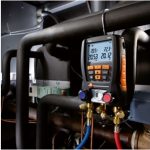Work-related compensated injury fatalities are now at a decade low, according to new figures released by Safe Work Australia.
On the back of high numbers in the early 2000s, Safe Work Australia set a goal of reducing the incident rate of compensated injury and musculoskeletal disorder fatalities by 20 per cent in ten years. In fact, figures suggest the country lowered this rate by an incredible 41 per cent.
Acting Chief Executive Officer at Safe Work Australia, Michelle Baxter explained that figures show signs of improvement, but more emphasis on safety is still required.
“While this is a good result, there were still 178 compensated injury and disease fatalities recorded in Australia for 2012-13. More work is needed to improve work health and safety and reduce this figure even further,” she said.
The figures are part of Safe Work Australia’s 16th Comparative Performance Monitoring report which provides insight into work health and safety in both Australia and New Zealand.
In addition, 11 out of every 1,000 workers during 2012-2013 were injured seriously enough to stop working for at least a week. Safe Work Australia set a 40 per cent target over the decade, however this illustrates just a 26 per cent improvement.
“To continue to see a decrease in injury and disease in the workplace we must stay committed to work health and safety and set high targets to ensure safer workplaces for all Australians,” Ms Baxter concluded.
Testo options
Keeping workers safe on the job is about providing employees with the information and the tools to identify hazards and risks quickly. Testo have a large range of options for this very purpose protecting workers from a number of dangers.
This includes gas detectors to pick up on high levels of carbon dioxide and carbon monoxide as well as comfort level measurement & humidity measurement devices for heat stress related incidents. Thermal imaging cameras are also available to detect catastrophic mechanical failures prior to it happening and causing serious injury.









 Reduce cooking oil costs while ensuring quality
Reduce cooking oil costs while ensuring quality Expert knowledge on CO2 monitoring
Expert knowledge on CO2 monitoring Refrigeration knowledge - in 3 modules
Refrigeration knowledge - in 3 modules



